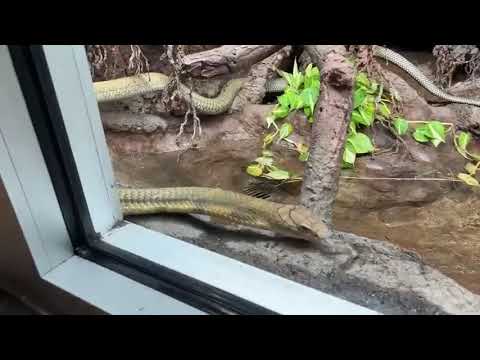– Insights into the biology and behavior of the King Cobra
– The critical role of Murthy in wildlife conservation and zoo management
– The significance of April 24 in highlighting the conservation efforts for King Cobras
– Strategies for engaging the public in wildlife conservation through educational programming
The King Cobra, with its scientific designation Ophiophagus hannah, stands as a figure of both reverence and fear across its native habitats in Southeast Asia and India. Recognized as the world’s longest venomous snake, it can reach lengths of up to 18 feet, a size that allows it to dominate its environment. Unlike other cobras, the King Cobra’s diet primarily consists of other snakes, earning it the name “Ophiophagus,” which translates to “snake-eater.” This dietary preference plays a role in the ecosystem as a top predator, managing the populations of its prey.
The King Cobra’s venom is not the most potent among venomous snakes, but the volume it can deliver in a single bite—up to two teaspoons—makes it incredibly dangerous. What makes this venom exceptionally deadly is its neurotoxic effects, capable of causing severe pain, blurred vision, dizziness, drowsiness, and eventually paralysis. However, it’s worth noting that the King Cobra prefers to avoid confrontation with humans and retreat unless cornered or provoked.
They are moving on to the critical role of individuals such as Murthy in zoo management and wildlife conservation. Professionals like Murthy are at the forefront of developing and implementing strategies that accommodate both the need for species preservation and public education. By creating natural habitats within zoological parks, they focus on the well-being and natural behavior of species like the King Cobra. Murthy’s work often involves collaboration with global conservation projects, aiming to protect these species in their natural environments and understanding their roles within ecosystems.
April 24 serves a dual purpose in highlighting the importance of species like the King Cobra in natural biodiversity and the ongoing efforts by conservationists and researchers like Murthy to safeguard their future. On this day, events are organized to raise awareness of the King Cobra’s conservation status, which is currently listed as vulnerable due to habitat destruction and poaching. By marking such a date, conservationists underscore the urgent need for habitat preservation and the implementation of stricter laws against illegal wildlife trade.
One of the most effective strategies in wildlife conservation is engaging the public through educational programming. Initiatives designed to inform and inspire individuals about ecosystems’ complexities and species’ interconnectedness play a pivotal role. Interactive sessions, often led by experts like Murthy, provide insights into the King Cobra’s life, dispelling myths and fostering a deeper appreciation for this remarkable species. Through educational outreach, zoos and conservation programs can cultivate a sense of stewardship, encouraging actions that support environmental sustainability and wildlife conservation.
In summary, the King Cobra is more than just a symbol of fear; it is a vital component of its ecosystem, controlling populations of prey species and maintaining balance. Conservationists and zoo professionals like Murthy are crucial in preserving these magnificent creatures and their habitats. April 24 emerges as a significant day to celebrate the King Cobra and reaffirm our commitment to wildlife conservation. Through public engagement and educational efforts, there is hope for a future where humans and snakes like the King Cobra can coexist, each playing their role in the rich tapestry of life on Earth. Engaging the public in these efforts ensures that the story of the King Cobra and the efforts to save it continue to inspire and drive conservation efforts worldwide.
*****
Source Description
Meet Murthy, our snake-saving conservation partner who’s helping protect snakes in India’s Eastern Ghats. Learn more about the work he does in the field, along with Keeper Franny who is telling us all about our King cobra, Hannah: bit.ly/2wHMYBw


